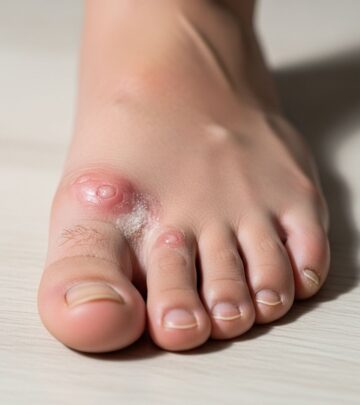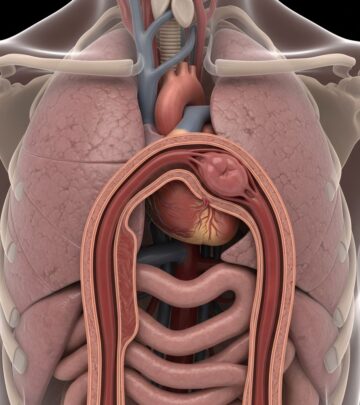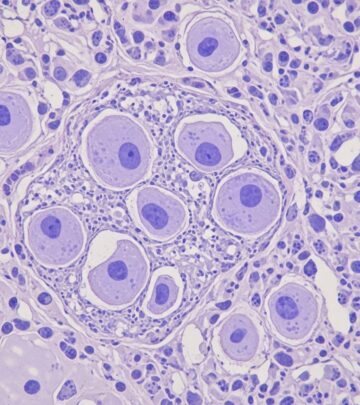Morton’s Neuroma: Diagnosis and Treatment Options
Comprehensive guide to Morton’s neuroma, from accurate diagnosis to the latest non-surgical and surgical treatment methods.

Morton’s Neuroma: Diagnosis and Treatment
Morton’s neuroma is a painful condition affecting the ball of the foot, most commonly occurring between the third and fourth toes. It involves thickening of tissue around one of the nerves leading to the toes, often resulting in sharp, burning pain or a sensation as if standing on a pebble in the shoe. Understanding the diagnosis and available treatment options is essential for effective management and relief.
Contents
- Diagnosis
- Treatment
- Footwear Modifications
- Corticosteroid Injections
- Surgical Options
- Morton’s Neuroma Care at Leading Clinics
- Costs and Insurance
- Frequently Asked Questions (FAQs)
Diagnosis
The diagnostic process for Morton’s neuroma starts with a careful assessment by your healthcare professional, who will explore your medical history, lifestyle, and specific symptoms. Identifying Morton’s neuroma relies on both physical examination and possibly imaging tests to confirm the diagnosis or rule out other causes of foot pain.
Clinical Examination
- Palpation: Applying pressure along the ball of the foot to identify the most painful area.
- Squeeze Test: Compressing the sides of the foot and feeling for a ‘Mulder’s click,’ a clicking sensation between the metatarsal bones which may signify neuroma presence.
- Range of Motion Testing: Evaluating movement of the toes to assess any impact on mobility or discomfort during articulation.
- Assessment for Other Irregularities: Looking for flat arches, bunions, or other foot deformities that could contribute to symptoms.
Imaging Tests
While physical exam findings often direct diagnosis, imaging studies may be employed to confirm Morton’s neuroma or exclude other conditions (e.g., fractures, arthritis, or soft tissue masses):
- X-rays: Foot X-rays while standing can detect bone fractures or underlying skeletal abnormalities, though they do not directly reveal neuromas.
- Ultrasound: Useful for real-time visualisation of soft tissues, identifying neuromas or irregularities in affected joints.
- Magnetic Resonance Imaging (MRI): Provides detailed images of soft tissues, and may help differentiate neuromas from other causes when physical signs are ambiguous or symptoms are unusual.
Treatment
Morton’s neuroma can often be managed with a combination of conservative, minimally invasive, and—if necessary—surgical approaches. Treatment selection depends on the severity of symptoms and response to initial therapies.
Conservative and Nonsurgical Interventions
- Activity Modification: Avoiding activities that exacerbate symptoms, especially high-impact or prolonged weight-bearing exercises.
- Footwear Changes: Using shoes with a wide toe box and low heels can significantly decrease nerve irritation.
- Padded Shoe Inserts: Ready-made or custom orthotic devices are designed to redistribute pressure away from the painful area and provide forefoot cushioning.
- Physical Therapy: Includes stretching exercises to increase foot flexibility, massage to reduce nerve discomfort, and muscle strengthening for improved foot mechanics.
- Home Remedies: Rest, applying ice packs to reduce inflammation, and using over-the-counter pain relievers like ibuprofen or aspirin for symptom control.
| Method | Purpose | Description/Notes |
|---|---|---|
| Shoe Inserts / Pads | Relieve pressure on nerve | OTC or custom, cushion the metatarsal head |
| Physical Therapy | Improve foot function | Exercises, massage, stretching |
| Ice Packs | Reduce swelling | Apply to affected area several times daily |
| NSAIDs | Alleviate pain/inflammation | Short-term use, as advised by physician |
| Footwear Adjustments | Mitigate nerve compression | Low-heeled, wide toe-box shoes |
Footwear Modifications
Appropriate footwear is central to symptom relief for many individuals:
- Avoid High Heels: High-heeled shoes increase pressure on the metatarsal heads, aggravating neuroma symptoms.
- Wear Shoes with Wide Toe Boxes: Wide toe boxes prevent compression of the forefoot, which can reduce irritation of the nerve.
- Utilize Cushioning Inserts: Both ready-made and custom orthotic inserts provide additional support, further relieving nerve stress and discomfort.
Corticosteroid Injections
If conservative treatments do not adequately control symptoms, healthcare providers may recommend targeted injections:
- Corticosteroid Injections: Administered into the painful area to reduce inflammation and nerve irritation. These are often guided by ultrasound to improve precision and effectiveness.
- Local Anesthetic: Sometimes added to corticosteroid injections for immediate, temporary pain relief.
- Regimen: Typically, only a single injection is performed, as repeated use of corticosteroids may pose a risk of tissue atrophy or damage.
Other injection options, which may be used less commonly, include alcohol sclerosing injections to chemically ablate the nerve and radiofrequency ablation for nerve disruption. These methods can offer intermediate-term relief but are used selectively.
Surgical Options
For individuals with persistent or severe symptoms who do not experience relief from conservative or minimally invasive treatments, surgery may be considered.
Common Surgical Approaches
- Neurectomy: This involves surgical removal of the enlarged and damaged section of the nerve. It is the most established and frequently performed surgical procedure for Morton’s neuroma. While usually successful, it may result in permanent numbness in the affected toes.
- Nerve Ablation Techniques: Cryogenic surgery (cryoablation) or radiofrequency ablation are employed in some cases to disable (rather than remove) the affected nerve, reducing transmission of pain signals.
- Nerve Decompression: Decompression surgery entails cutting certain ligaments or tissues in the forefoot area to create additional space for the nerve, relieving pressure without removing it.
Selection of surgical technique depends on clinical judgment, patient preferences, and the surgeon’s expertise. Procedures that preserve the nerve are evolving and may not yet be as widely studied as neurectomy.
Risks and Outcomes
- Permanent Toe Numbness: Especially common after nerve removal.
- Recurrence of Symptoms: Occasionally, symptoms may return if not all of the neuromatous tissue is removed or nerve regrowth occurs.
- Wound Healing Problems: As with any surgery, infection and delayed healing are possible but rare.
Most people who choose surgery report substantial pain relief. Surgical interventions are generally considered only after other approaches have been exhausted due to risks of altered sensation.
Morton’s Neuroma Care at Leading Clinics
Specialty centers, such as Mayo Clinic, offer integrated, multidisciplinary care for patients with Morton’s neuroma. Their treatment approach emphasizes conservative measures as first-line therapy, reserving surgery for refractory cases. Key features of care at such centers include:
- Experienced Specialists: Foot and ankle teams comprise orthopedic surgeons, rehabilitation specialists, and other experts dedicated to personalized care plans.
- Extensive Expertise: Hundreds of patients are treated annually at Mayo Clinic’s three major campuses, and the orthopedic departments routinely receive national recognition for excellence.
- Coordinated Services: Collaboration between providers ensures a seamless approach to diagnosis, treatment, and post-procedure rehabilitation.
- Research and Innovation: Continual investigation into advanced surgical and non-surgical therapies to reduce pain and improve quality of life for patients with neuromusculoskeletal disorders.
| Campus | Location | Specialties |
|---|---|---|
| Arizona | Phoenix / Scottsdale | Orthopedic Surgery, Sports Medicine |
| Florida | Jacksonville | Rehabilitation, Pain Management |
| Minnesota | Rochester | Physical Medicine, Surgery |
| Other | Mayo Clinic Health System in multiple states | Multidisciplinary Care |
Costs and Insurance
Before seeking evaluation and treatment, patients are encouraged to verify their health insurance coverage, as requirements can differ based on provider and policy:
- Insurance Networks: Mayo Clinic participates with many major insurers and does not typically require physician referral, although some policies may.
- Authorization: Some treatments (especially surgical interventions) may necessitate prior authorization from the insurer.
- Billing Assistance: Dedicated staff can assist with questions about coverage, billing procedures, and pre-visit requirements. Always check with your insurance provider for the latest information.
Frequently Asked Questions (FAQs)
Q: What symptoms typically indicate Morton’s neuroma?
A: Classic signs include sharp, burning pain in the ball of the foot, tingling or numbness in the toes, and the sensation of walking on a small stone.
Q: Can Morton’s neuroma heal without surgery?
A: Yes, many people achieve relief with conservative treatment such as shoe modifications, physical therapy, and injection therapy.
Q: What is the success rate of non-surgical treatment?
A: Approximately 80% of individuals experience substantial symptom improvement with conservative measures like footwear changes and orthotics. For those who progress to surgery, success rates range from 75% to 85%, with many reporting durable pain relief.
Q: Will I experience side effects after neuroma surgery?
A: The most common side effect after surgical removal is permanent numbness in part of the toes served by the removed nerve. Other risks, including infection and wound complications, are rare with contemporary surgical techniques.
Q: Are there any alternative therapies for Morton’s neuroma?
A: In selected cases, cryogenic or radiofrequency ablation may disable the nerve and reduce pain. These approaches are less commonly used, and long-term outcomes are still under research.
Preparing for Your Appointment
Prior to your consultation, consider the following steps to facilitate accurate diagnosis and optimal care:
- Document your symptoms, their duration, and any triggering activities.
- Note all current medications, including supplements.
- Bring a list of previous treatments and footwear changes attempted.
- Prepare any questions for your healthcare professional about diagnostic methods, treatment timelines, and expected outcomes.
Key Takeaways
- Morton’s neuroma is a treatable condition with a range of effective, evidence-based therapies.
- Early diagnosis and lifestyle modifications can prevent progression and reduce the need for invasive interventions.
- Both nonsurgical and surgical approaches provide high rates of symptom relief, especially when care is delivered by specialized foot and ankle clinics.
References
- https://www.healthline.com/health/mortons-neuroma
- https://www.mayoclinic.org/diseases-conditions/mortons-neuroma/diagnosis-treatment/drc-20351939
- https://www.mayoclinic.org/diseases-conditions/mortons-neuroma/care-at-mayo-clinic/mac-20351942
- https://www.webmd.com/women/mortons-neuroma
- https://www.mayoclinic.org/diseases-conditions/mortons-neuroma/doctors-departments/ddc-20351941
- https://www.mayoclinic.org/diseases-conditions/mortons-neuroma/symptoms-causes/syc-20351935
- https://www.amerikanhastanesi.org/mayo-clinic-care-network/mayo-clinic-health-information-library/diseases-conditions/morton-s-neuroma
- https://monument.health/mayo-clinic-health-information-library/article/?mayo-id=ABT-20330605
- https://www.nhs.uk/conditions/mortons-neuroma/
Read full bio of medha deb












